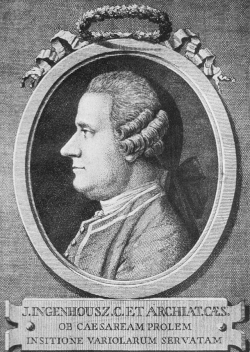Jan Ingenhousz

- Born
- 8 October 1730
- Died
- 7 September 1799 (age 68)
Photosynthesis: one of the most well-known and important aspects of biology. It is fundamental to all of plant science, and was discovered by the Dutch-born British physician Jan Ingenhousz.
Ingenhousz was a close friend of Benjamin Franklin and Henry Cavendish, had constant itchy feet, and was exceptionally well educated. His scientific career stretched over many disciplines, meaning he was not only responsible for discovering photosynthesis, but also saving the lives of many people and making great contributions to the world of chemistry.
At the tender age of 16 Ingenhousz began to study medicine, and driven by an intense curiosity he moved to London from his home city of Breda, Netherlands, to learn as much as he could about small pox vaccinations. His charismatic character meant he made many acquaintances and he soon became a master inoculator, personally preventing the premature deaths from smallpox of 700 people in Hertfordshire during an epidemic.
Ingenhousz practised medicine for many years but soon began to feel unfulfilled, and this led him to looking elsewhere for a discipline to feed his starving brain. This discipline happened to be ecology. His interest began when he read a paper outlining how gases are made in plants. Being the man he was, he wasn’t satisfied with just the information he was given, so he began to conduct experiments of his own to make sense of the paper. In doing so he discovered that plants specifically take in carbon dioxide and give out oxygen. He then put the most important piece of the puzzle together: that the amount of gas absorbed/released is dependent on the amount of sunlight hitting the plant, and thus, the theory of photosynthesis was born.
Regardless of what he had already achieved, Ingenhousz was unable to quench his insatiable thirst for science and discovery. He also decided to embark on research into chemistry and look into the movement of materials over surfaces, which added another string to his bow. Through sheer determination and constant experiment, he was able to describe how coal dust moves on the surface of alcohol, which is something we now call Brownian motion.
Due to his extensive scientific career, in 1779 Ingenhousz was rightly appointed as a Fellow of the Royal Society. But within a few months of receiving this honour however, Jan Ingenhousz passed away. His wife followed a year later.



